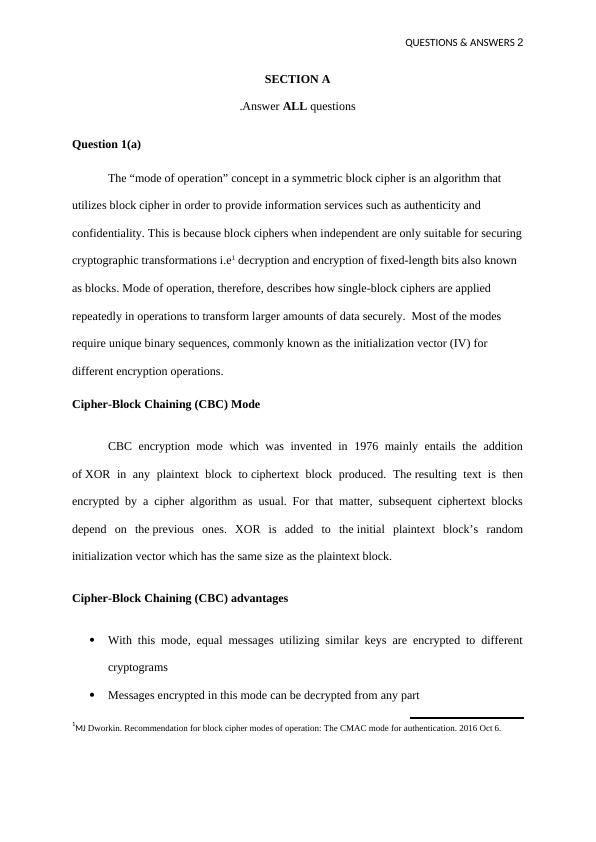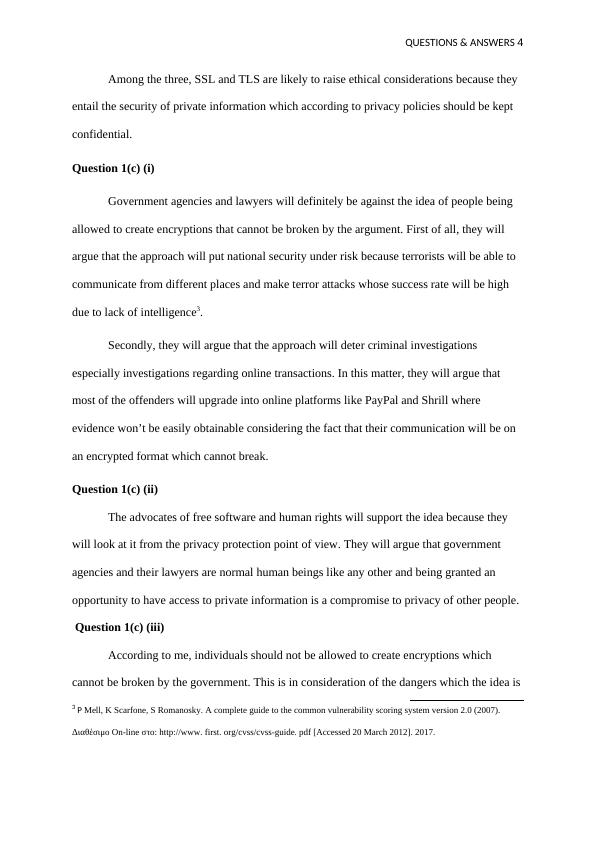Questions & Answers on Symmetric Block Cipher and Encryption Process
Explaining encryption modes of operation, different types of encryption, ethical considerations, government agencies' opinions, advocates of free software and human rights, personal view on encryption, and reviewing digital authentication mechanisms.
12 Pages2956 Words64 Views
Added on 2023-04-21
About This Document
This document provides answers to questions related to symmetric block cipher, encryption process, different encryption types, advantages and disadvantages of Cipher-Block Chaining (CBC) mode, ethical considerations of unbreakable encryptions, authentication mechanisms, importance of strong passwords, basics of cybersecurity, vulnerability scoring, and firewall rules.
Questions & Answers on Symmetric Block Cipher and Encryption Process
Explaining encryption modes of operation, different types of encryption, ethical considerations, government agencies' opinions, advocates of free software and human rights, personal view on encryption, and reviewing digital authentication mechanisms.
Added on 2023-04-21
ShareRelated Documents
End of preview
Want to access all the pages? Upload your documents or become a member.
Enhancing Cyber Security of Networked Control Systems using Encryption
|6
|585
|355
Analysis of Ciphers Techniques
|14
|2343
|240
Article | EVALUATION OF AES AND DES
|6
|1091
|8
Cryptography and Steganography Techniques
|10
|1022
|100
Security in IT and Information Technology: Techniques for Deciphering Messages
|4
|696
|304
Assignment based on Wireless Networking Concept
|9
|1501
|85




